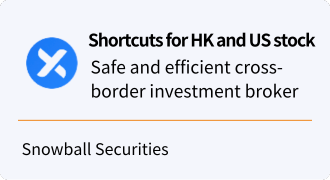Investment Philosophy: The Root Cause and Solution to Retail Investor FOMO Trading
[DISCLAIMER] This article is for educational and informational purposes only and does not constitute investment advice. Readers should consult with qualified financial professionals before making any investment decisions.
Do you experience this while watching the market daily: excitement when stock prices rise, anxiety when they fall? Do you feel envious when others make money, only to get trapped the moment you buy? If you've experienced these situations, don't worry—you're not alone. As a veteran who has navigated the quantitative trading field for over a decade, I've witnessed too many investors lose their way in the market.
The "investment philosophy" we're discussing today is the fundamental solution to these pain points. This article will help you understand why some people navigate markets with ease while others constantly chase highs and sell lows, ultimately guiding you to establish your own investment values.
Target Audience: Suitable for investors with basic investment experience who frequently make emotional decisions due to market volatility and hope to establish systematic investment thinking—from beginner to intermediate level.
Ⅰ. Why Do Retail Investors Always Chase Highs and Sell Lows? Missing Investment Philosophy is the Culprit
1.1. The Human Trap: The Cycle of Fear and Greed
I once conducted an interesting survey: among the investors I've encountered, over 80% have experienced "buying high and selling low." This isn't a technical issue—it's a human nature problem.
Imagine this scenario: Your stock has risen for three consecutive days, social media feeds are filled with profit screenshots, and your heart begins to race—"Should I add more positions? What if I miss this rally?" So you chase the price higher. The next day, the market pulls back, and you start worrying: "Will it continue falling? Should I cut losses?"
This is typical emotional investing. Without investment philosophy as guidance, we're like driving in the dark, only able to follow the taillights ahead.
1.2. Three Major Signs of Lacking Investment Philosophy
Through years of observation, I've found that investors lacking investment philosophy typically share these characteristics:
- Following trends: Buying whatever's hot without considering underlying logic
- Emotional decision-making: Completely driven by market sentiment—greedy when rising, fearful when falling
- Lack of consistency: Value investing today, short-term trading tomorrow, chasing concept stocks the day after
The root cause of these behaviors is the absence of a personal investment philosophy system.
Ⅱ. Investment Philosophy vs. Investment Skills: The Deep Mystery of How Beliefs Determine Behavior
2.1. What is Investment Philosophy?
Investment philosophy is like your investment GPS—it tells you where to go, why you're going there, and how to respond when road conditions change.
Specifically, investment philosophy contains three core elements:
- Value concepts: What kind of investments do you consider valuable?
- Risk attitude: How much risk are you willing to take for returns?
- Time perspective: Is your investment for short-term gains or long-term wealth accumulation?
2.2. Investment Philosophy vs. Investment Skills: What's the Essential Difference?
Many people mistake investment skills for investment philosophy—a fundamental misunderstanding. Let me illustrate with a simple analogy:
- Investment skills are like "driving techniques"—how to shift gears, brake, overtake
- Investment philosophy is "trip planning"—why drive, where to go, which route to take
No matter how many technical analysis or financial analysis skills you master, without clear investment philosophy guidance, you'll still lose direction in the market.
2.3. How Do Beliefs Determine Behavior? A Real Case Study
When the pandemic broke out in March 2020, the market crashed in panic. I observed two completely different reactions:
Value Investor A: Believed that quality companies' intrinsic value hadn't changed due to the pandemic, instead viewing market panic as a buying opportunity, adding positions in Apple, Microsoft, and other tech stocks at low points.
Short-term Trader B: Feared further losses, panic-sold all holdings, then bought back at high prices when the market rebounded.
Same market environment, different investment philosophies led to completely different behaviors and outcomes. This is the best proof of how beliefs determine behavior.
Ⅲ. Common Investment Philosophy Misconceptions: Mistaking Methods for Philosophy, Techniques for Faith
Misconception 1: Treating Investment Methods as Investment Philosophy
Typical example: "I'm a technical trader, I only invest based on candlestick charts."
This actually mistakes analytical methods for investment philosophy. Technical analysis is just a tool. The real questions are: Why do you choose technical analysis? What do you believe about markets? What are your investment goals?
Correct understanding: Technical analysis might be part of your investment philosophy, but not all of it. You need to think about deeper questions—do you believe markets are efficient or inefficient? Do you think stock prices are mainly determined by fundamentals or emotions?
Misconception 2: Treating Investment Techniques as Faith
Typical example: "Buffett said to invest long-term, so I never sell stocks."
This is a dogmatic understanding of investment masters' views. Buffett's long-term investing is based on deep fundamental analysis, not simple "buy and hold."
Correct understanding: Learn the essence of investment masters' thinking, not copy their specific practices. Everyone has different financial situations, risk tolerance, and investment goals—you need to build an investment philosophy suitable for yourself.
Misconception 3: Frequently Changing Investment Philosophy
Typical example: Believing in growth investing during bull markets, switching to value investing in bear markets, and doing short-term trading in sideways markets.
This "philosophical drift" is an important cause of investment failure. True investment philosophy should have consistency and stability, guiding your behavior across different market environments.
Ⅳ. Building Your Investment Values: 3 Practical Steps
Through years of practice and observation, I've summarized a three-step method for building personal investment philosophy:
Step 1: Self-Awareness—Understanding Your Investment DNA
Before starting to invest, you need to honestly ask yourself several questions:
Financial Status Assessment:
- What's your risk tolerance? How much paper loss can you withstand?
- How long is your investment timeline? 3 years, 10 years, or 30 years?
- How important is this investment capital to your life?
Personality Analysis:
- Do you prefer steady progress or are you willing to take risks for high returns?
- Can you stay calm when facing market volatility?
- Do you have enough time and energy to research investment targets?
Practical Tool: I've created an "Investment DNA Self-Assessment" tool to help you understand yourself and find the investment philosophy most suitable for you. This will become the foundation of your investment philosophy.
Step 2: Values Construction—Determining Your Investment Beliefs
Based on self-awareness, you need to establish your investment values:
Market Concepts:
- Do you think markets are rational or emotional?
- Do you believe markets can price correctly, or do they frequently misprice?
- Do you think stock prices are mainly determined by fundamentals or capital flows?
Risk-Return Views:
- Do you focus more on absolute returns or relative returns?
- Can you accept short-term losses for long-term gains?
- What do you think the relationship between risk and return is?
Time Value Views:
- Do you believe in the compounding effect of time?
- Are you willing to give up short-term opportunities for better long-term returns?
Step 3: Practical Verification—Perfecting Philosophy Through Action
Building investment philosophy isn't achieved overnight—it needs continuous verification and refinement in practice:
Small-scale Testing: Use small amounts of capital to invest according to your investment philosophy, observing your psychological reactions and decision-making processes.
Record and Reflect: Keep an investment diary, recording the reasons, processes, and results of each investment decision, regularly reflecting on whether they align with your investment philosophy.
Moderate Adjustments: Based on practical experience, moderately adjust your investment philosophy, but avoid frequent major changes.
Case Study: A friend of mine initially thought he was suitable for value investing, but after six months of practice, discovered he couldn't tolerate the long-term sideways movement of value stocks. He ultimately adjusted to a "value + growth" balanced strategy—this adjustment was reasonable optimization based on real experience.
Ⅴ. Practical Application of Investment Philosophy: From Theory to Action
5.1. Behavioral Differences Between Different Investment Philosophies
Let me use a specific example to illustrate how investment philosophy guides actual investment behavior:
Scenario: A tech company's stock price drops 30% after earnings release, but fundamentals remain solid.
Value Investor's Response:
- Thinking: Does the stock price drop reflect real fundamental changes?
- Action: If fundamentals haven't deteriorated, might view it as a buying opportunity
- Basis: Believes markets misprice in the short term but return to value long-term
Growth Investor's Response:
- Thinking: Is the company's growth prospects affected?
- Action: If growth logic remains intact, might add positions on dips
- Basis: Believes excellent companies' long-term growth brings substantial returns
Technical Analyst's Response:
- Thinking: What do price patterns and technical indicators suggest?
- Action: Decide to buy, sell, or wait based on technical signals
- Basis: Believes prices contain all information, technical patterns have predictive value
5.2. Consistency Testing of Investment Philosophy
A mature investment philosophy should guide you to maintain consistent behavioral patterns across various market environments. You can test yourself with these questions:
- Do your investment behaviors remain consistent in bull and bear markets?
- Can you act according to established principles when facing unexpected events?
- Do your investment decisions have clear logical chains?
Ⅵ. Next Episode Preview: Why is Investment Philosophy Important?
Today we explored what investment philosophy is and how to build personal investment values. But you might still wonder: Is investment philosophy really that important? Do investors without clear philosophy necessarily fail?
In the next article, I'll deeply analyze the importance of investment philosophy through extensive data and case studies:
- Psychological perspective: How emotions affect investment decisions, how investment philosophy helps overcome human weaknesses
- Statistical data support: Long-term return differences between investors with clear investment philosophy vs. those without
- In-depth case analysis: Why investors with different philosophies have completely different results in the same market environment
- Practical diagnostic tools: How to evaluate your current investment philosophy maturity
Ⅶ. Complete Investment DNA Assessment, Develop Your Personalized Investment Strategy
Step 1: Complete 10 Core Tests (10 minutes)
Click to enter -> Investment DNA Assessment: 10 Questions to Determine Your Best Investment Strategy
The financial status and psychological trait tests have already helped you initially outline your investment profile. Answer each question honestly and record your total score and dimensional score distribution.
Step 2: Deep Self-Analysis (20 minutes)
- Financial Health Check: Beyond investment capital ratio, check if your emergency fund is sufficient (recommend 6-12 months of living expenses)
- Goal Focus: Clarify specific investment purposes—is it for a down payment in 3 years or retirement in 30 years?
- Capability Assessment: Evaluate time and willingness to learn new knowledge; investing requires continuous learning
Step 3: Develop Personalized Strategy (20 minutes)
Based on test results:
- High scorers (35-50 points): Consider more aggressive portfolios, increase equity asset allocation
- Medium scores (20-34 points): Recommend balanced allocation, focus on steady growth
- Low scorers (10-19 points): Start with low-risk products, gradually build investment confidence
Practical Verification: Small Capital Real Testing
Don't rush to determine your final investment philosophy. First use small amounts (1000-5000 yuan) to verify your test results in real markets. Observe your emotional reactions to actual gains and losses—this is more accurate than any theoretical test.
Core Reminder
These 10 questions help you establish a basic framework for investment DNA, but the investment philosophy most suitable for you needs continuous refinement and improvement in practice. The successful models of Buffett, Lynch, and Soros are all based on their unique personalities, knowledge, and resource endowments. Your investment DNA is unique and needs to be tailored based on true self-awareness, not blindly copying master strategies.
Start now—spend an hour seriously testing and thinking to lay a solid foundation for building your personalized investment system!
Ⅷ. Conclusion
Investment philosophy isn't mysterious theory, but a basic thinking framework every investor should possess. It's like a compass on your investment journey, helping you maintain direction through market storms.
Core Points Review:
- The root cause of retail investors chasing highs and selling lows is lack of investment philosophy guidance
- Investment philosophy provides conceptual guidance; investment skills are operational tools
- Building investment philosophy requires three steps: self-awareness, values construction, and practical verification
- Through Investment DNA assessment, you can quickly find your suitable investment starting point
Action is More Important Than Thinking:
No matter how perfect the theory, it's not as valuable as one real practice. Complete the 10 DNA test questions in this article, spend an hour deeply analyzing yourself, then start verifying with small capital—this is more valuable than reading a hundred investment books. Remember, investment philosophy isn't unchanging dogma, but wisdom that continuously evolves through practice.
Deep Thinking:
True investment wisdom lies not in predicting market movements, but in understanding yourself, understanding markets, then finding balance between the two. When you have clear investment philosophy, you're no longer a slave to market emotions, but the master of your own wealth destiny.
Interactive Invitation:
What are your Investment DNA test results? Which investment philosophy do you lean toward? What confusion have you encountered in building personal investment values? Welcome to share your test insights and investment thoughts in the comments. I'll address everyone's practical questions in more depth in the next article.
If this article helped you re-examine your investment behavior, feel free to share it with friends who are also exploring their investment journey. After all, one person walks fast, but a group walks far.







